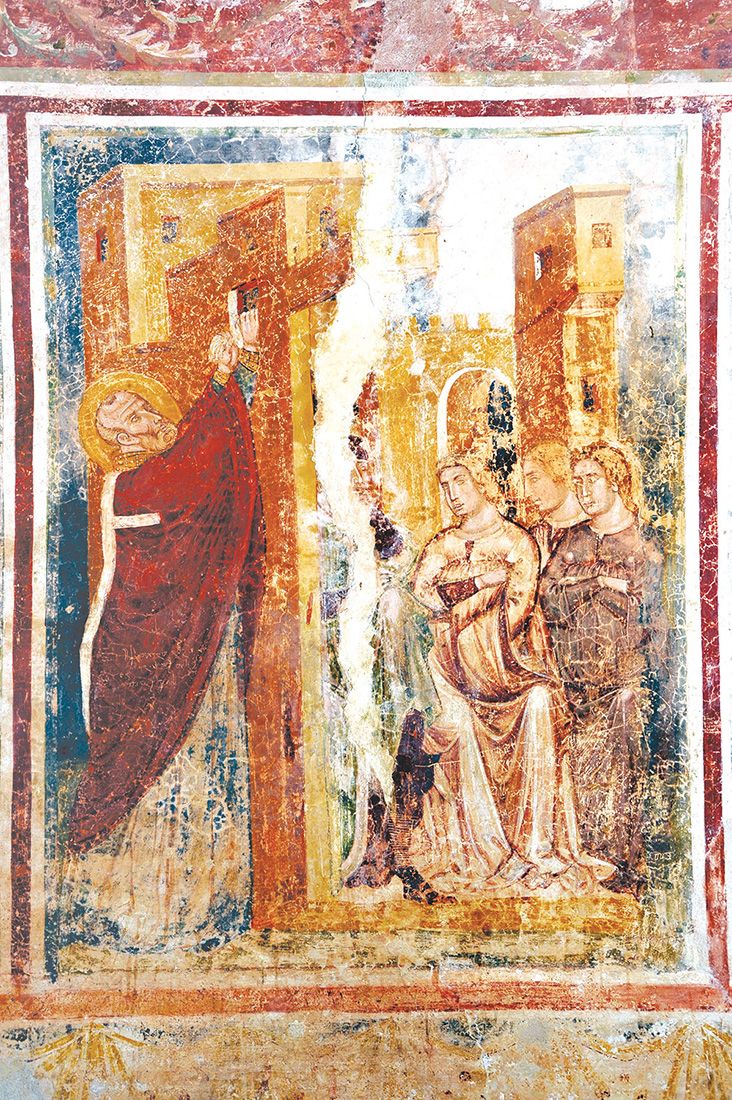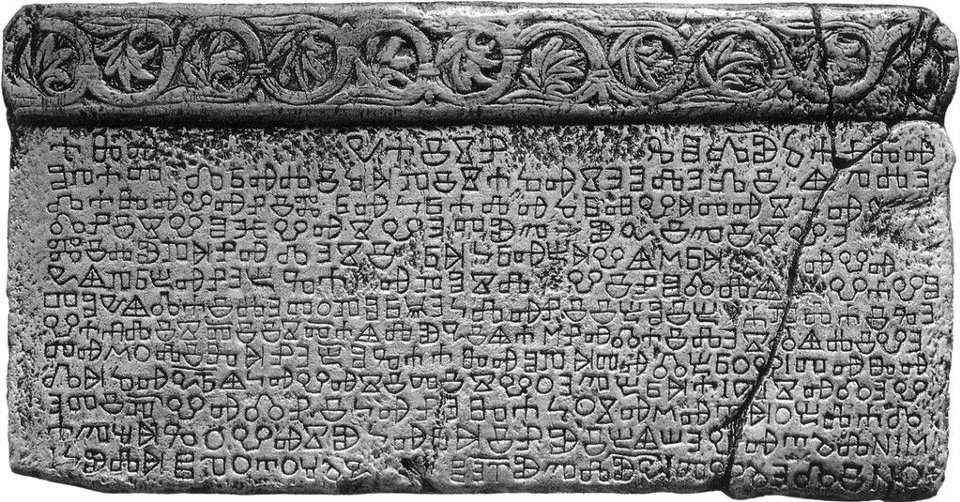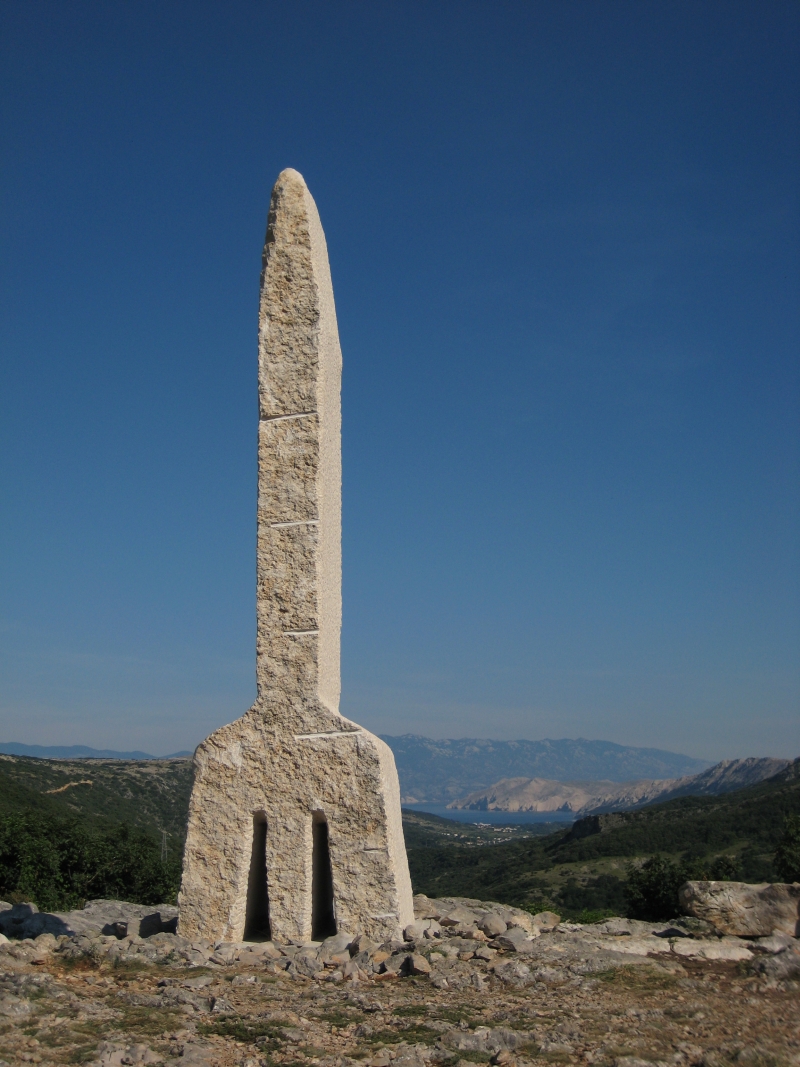Az, Buki, Vidi: 5 Things to Know About the Glagolitic Alphabet
February 22nd, 2022 - In honour of the Croatian Glagolitic Script Day, we bring you five facts about the old Croatian alphabet, from medieval graffiti to the first printed Croatian book
If you’ve been to Croatia, you must have seen it someplace: the Glagolitic script, the oldest known Slavic alphabet, was used in Croatia from the Middle ages all the way to the 20th century.
The script was mostly used in liturgy and in administrative law. Linguistic experts (and enthusiasts) aside, you’d be hard pressed to find someone who can read or write the Glagolitic alphabet these days.
Nevertheless, it’s an immensely important part of our cultural heritage, deserving of its own official day that’s observed each year on February 22nd. To mark the occasion, here are five - hopefully interesting - facts:
1. Each character in the Glagolitic alphabet is a letter, a word, and a numeral in one.
For example, the first letter of the Glagolitic alphabet is Ⰰ: A. It also signifies the word az, which means I. And finally, it stands for the number 1 as well.
When the characters were meant to represent numerals, they were written with the grapheme ~ at the top and dots on the sides.
It only gets better from there. String together the first nine letters of the Glagolitic alphabet, and you get an actual sentence: Az buki vidi glagole dobro est živjeti zelo zemlja. Loosely translated into English: I who know letters say that it’s good to live on Earth.
Or, in Glagolitic script:
Language is amazing.
2. Medieval worshippers were known to vandalise chapel walls with Glagolitic graffiti.
Countless medieval chapels in Istria are adorned with gorgeous frescoes, but if you take a closer look, you’ll often find small inscriptions in the Glagolitic script scratched into the surface.
Bishops and priests were prone to carving their names into the walls, so it’s no wonder that the common folk followed suit. The graffiti of medieval Istria speak of common social issues: famine, disease, poverty, war.
In the church of St Nicholas in Rakotule, on a fresco depicting St Nicholas leaving a bag of gold on the windowsill of a poor family's house, a note is scribbled: Give me a coin or two as well, Nico, so help you God.
 A fresco in the church of St. Nicholas in Rakotule
A fresco in the church of St. Nicholas in Rakotule
On the other hand, not all the messages are tragic, some being more reminiscent of third-graders scribbling on classroom desks. Such as the one in the Pazin parish church, where a certain worshipper noted:
I, Ivan Fraščić, came to Pazin and wrote…
The note abruptly stops here, but someone else was kind enough to finish it:
...wrote that I'm a beast and a worthless trinket.
We really haven’t evolved much since.
Learn more about the Glagolitic graffiti in Istria in our dedicated feature.
3. The first mention of the name Croatia, in Croatian, is set in stone in the Glagolitic script.
And a hefty chunk of stone at that: the Baška tablet, discovered in the church of St. Lucy on Krk island, is almost two metres wide, one metre tall, and weighs 800 kilograms.
It’s almost as if they knew that we as a nation would collectively obsess over it one day.
Dating to the early 12th century, the monument is a record of King Zvonimir’s donation of land to the Benedictine order, with the text inscribed in the massive limestone slab written in the Glagolitic script.

The crucial part of the text reads:
I, abbot Držiha, wrote this regarding the land which Zvonimir, the Croatian king, gave in his days to St. Lucy.
Further down, the abbot adds:
Whoever denies this, let him be cursed by God and the twelve apostles and the four evangelists and St. Lucy. Amen.
That’s a lot of ill fate to take on. The abbot’s claims remained undenied, and the original Baška tablet is now displayed in the Croatian Academy of Sciences and Arts in Zagreb. A replica was installed in the church of St. Lucy.
 Church of St. Lucy in Jurandvor, Krk island. Replica of the Baška tablet installed as the left altar partition / Image by Roberta F, Creative Commons
Church of St. Lucy in Jurandvor, Krk island. Replica of the Baška tablet installed as the left altar partition / Image by Roberta F, Creative Commons
4. Some special exceptions were made for the Glagolitic script.
Croats were the only nation in Europe to have been granted special permission to use their own language and the Glagolitic script in liturgy instead of Latin. We love feeling special.
Pope Innocent IV first extended this courtesy to the bishop Philip of Senj in 1248. A few years later, he also allowed Benedictine monks in Omišalj on Krk island to use the Croatian Church-Slavonic liturgy and the Glagolitic script.
It’s also worth mentioning that the Senj cathedral in Croatia is the world’s only Roman Catholic cathedral where Mass was celebrated in a language other than Latin up to the 1960s, when the Second Vatican Council finally allowed the use of vernacular languages in liturgy.
 Baška Glagolitic Trail, the letter A. Sculpture by Ljubo de Karina / Image by Roberta F, Creative Commons
Baška Glagolitic Trail, the letter A. Sculpture by Ljubo de Karina / Image by Roberta F, Creative Commons
5. Croatia’s first printed book came off the press on this day in 1483.
That's a long history of publishing! Seeing that it was written in the Glagolitic script, it doesn’t come as a surprise that it was a liturgical book - the only missal in Europe that wasn’t printed in the Latin script.
While the printing location remains undetermined, we know the exact date: the first copy was printed on February 22nd, 1483.
It only makes sense for the official day of the old alphabet to be observed on the very same date. It’s a relatively new occasion, as the Croatian Parliament voted for the date to be declared the Croatian Glagolitic Script Day in 2019.
Open Day at Old Slavonic Institute for Croatian Glagolitic Script Day
ZAGREB, February 10, 2020 - On the occasion of the Croatian Glagolitic Script and Glagolitism Day, the Old Slavonic Institute in Zagreb will have an Open Day on 21 February, the institute announced.
The Institute will be open to the general public on 21 February from 1 pm to 7 pm.
Apart from guided tours of the palace Škrlec-Balbi where the Institute is located, visitors will be able to view the Institute's latest editions and Glagolitic reprints, the library and documentation collection, and the Glagolitic lapidarium, as well as play games with Glagolitic characters.
The Old Slavonic Institute invites visitors to get acquainted with the work of the Scientific Centre of Excellence for Croatian Glagolitism, attend interesting lectures given by scholars from the Institute, see the virtual exhibition on the Zgombić manuscript, one of the most important non-liturgical Old Slavonic text collections, hear the Croatian Old Church Slavonic language, take a look at the Glagolitic Script and learn to write their name in it, or learn to write a Glagolitic character they like the best.
The Old Slavonic Institute is the central Croatian academic institution for researching Croatian Glagolitism. Members of the Institute research the Croatian Glagolitic heritage, with a special interest in the Croatian Old Church Slavonic language and all texts written in the Glagolitic script.
The Institute was founded in 1952, taking its basis from the Old Slavonic Academy from Krk, as a referential place for collecting, researching, and publishing Old Slavonic and Old Croatian written heritage.
It has been amassing a specialised library for decades, and more recently it has been digitalising Glagolitic heritage.
The Scientific Centre of Excellence for Croatian Glagolitism, which has been headed by the Institute since 2014, is developing a model of multidisciplinary research of the Medieval Glagolitic scriptorium.
Two projects funded by the Croatian Science Foundation will be conducted by the Institute in 2020.
More news about Glagolitic script can be found in the Lifestyle section.
Croatian Glagolitic Script Day to Be Marked on 22 February
ZAGREB, February 3, 2019 - The Croatian parliament is expected to soon decide on the initiative to declare Croatian Glagolitic Script Day on 22 February.
Last year, the Institute of Croatian Language and Linguistics launched a campaign called "Croatian Glagolitic Script Day" with the aim of popularising this Croatian alphabet and script.
Croatian Glagolitic Day is to be observed on 22 February in memory of the publishing of Missale Romanum Glagolitice (Croatian: Misal po zakonu rimskoga dvora), a Croatian missal, written in the Glagolitic script, and incunabulum printed in on 22 February 1483.
It is the first printed Croatian book and also the first missal in Europe not published in the Latin script.
The institute's head, Željko Jozić, told Hina last year that the purpose of the campaign is to bring the Glagolitic script, which is one of the most recognisable traits of literacy among Croatians, closer to the public, particularly to younger generations and school-age children.
More news on the Croatian langage can be found in the Lifestyle section.



